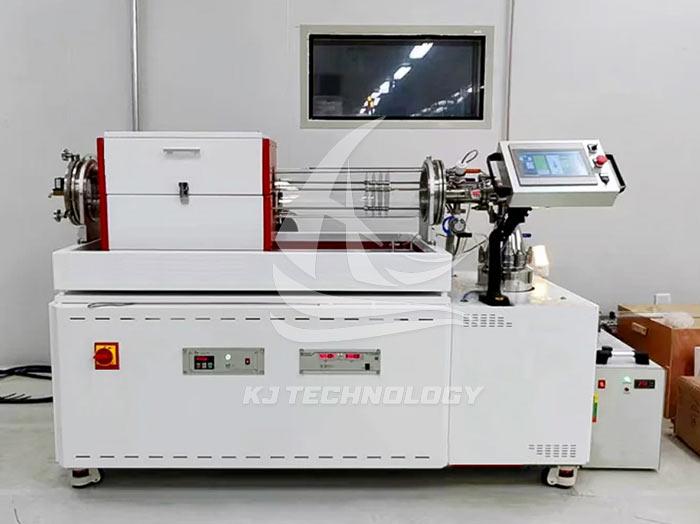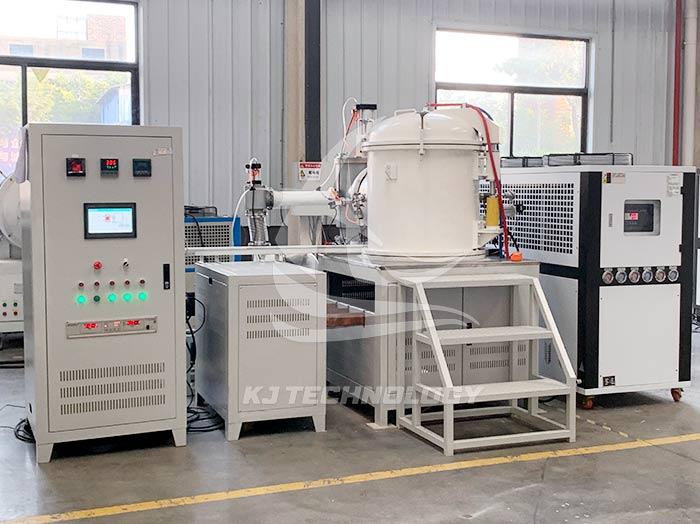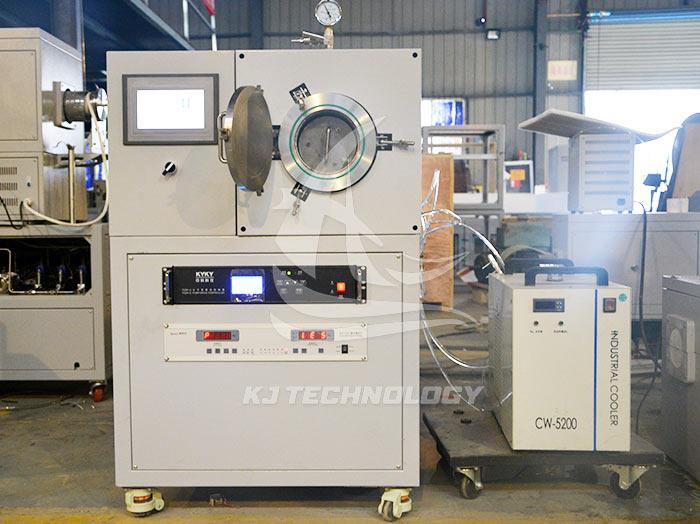What materials can be removed by a vacuum degreasing furnace?
 08-22-2025 Author: KJ technology
08-22-2025 Author: KJ technology
The vacuum degreasing furnace reduces the boiling point of organic matter in a low-pressure environment and combines gradient heating control to efficiently remove binders, lubricants, or residual organic matter from various materials, especially suitable for scenarios that are sensitive to oxidation or require high-precision degreasing. The following is a detailed classification of its removable materials and typical applications:
1. Metal material system
Powder metallurgy (MIM) materials
Typical materials: stainless steel (316L, 17-4PH), iron-based alloys, titanium alloys, cobalt chromium alloys, hard alloys (WC Co), etc.
Degreasing requirement: Metal injection molding (MIM) blanks contain 15% -50% binders (such as paraffin, polyoxymethylene (POM), polyethylene (PE), rubber, etc.), which need to be slowly removed in a vacuum environment to avoid cracking.
Process parameters:
Temperature range: 150-450 ℃ (low-temperature degreasing)+600-1200 ℃ (high-temperature sintering).
Vacuum degree: 5-20 Pa (degreasing stage) → 1 × 10 ⁻³ Pa (sintering stage).
Application case:
Medical devices (surgical instruments, orthopedic implants) require high-purity degreasing to avoid biocompatibility issues.
3C electronics (phone frame, heat sink) requires a dimensional accuracy of ± 0.05mm and precise control of degreasing rate.
High temperature alloys and magnetic materials
Typical materials: Nd-Fe-B permanent magnet, Sm Co magnet, Inconel 718 nickel based high-temperature alloy.
Degreasing requirements: Magnetic materials need to avoid oxidation, and high-temperature alloys need to remove molding lubricants (such as zinc stearate).
Process optimization:
Use hydrogen positive pressure degreasing to prevent oxidation.
After degreasing, directly raise the temperature to the sintering temperature to reduce intermediate pollution.
2. Ceramic material system
Oxide ceramics
Typical materials: alumina (Al ₂ O ∝), zirconia (ZrO ₂), silicon nitride (Si ∝ N ₄), silicon carbide (SiC).
Degreasing requirement: The binders (such as polyvinyl alcohol PVA, polyethylene glycol PEG) in ceramic green bodies need to be slowly degreased at low temperatures to avoid thermal stress cracking.
Application case:
The density of ceramic bearing balls after degreasing needs to be precisely controlled for the residual amount of degreasing.
Ceramic cutting tools need to avoid surface defects after degreasing and optimize the design of wax traps to reduce secondary pollution.
Metal/Ceramic Composite Materials
Typical materials: metal ceramic (TiC Ni), carbide reinforced alloy (WC Co Ni).
Degreasing requirement: Composite materials need to simultaneously remove the binder in both metal and ceramic phases, while avoiding interface reactions.
Process innovation:
Adopting phased degreasing: first remove the ceramic phase binder at low temperature, and then remove the metal phase binder at high temperature.
Introduce argon carrier gas for cleaning to reduce interface oxidation.
3. Special material system
polymer matrix composite
Typical materials: Carbon Fiber Reinforced Polymer (CFRP), Glass Fiber Reinforced Plastic (GFRP).
Degreasing requirement: It is necessary to remove solvents or unreacted monomers from the resin matrix while avoiding fiber damage.
Catalytic degreasing material
Typical materials: Polyoxymethylene (POM) based MIM blanks, certain thermoplastic materials.
Principle of degreasing: Catalytic decomposition of binders under acidic atmosphere (such as nitric acid vapor) or high temperature.
Equipment requirements:
A catalytic reaction device (such as a nitric acid generator) is required.
The degreasing rate is faster than traditional vacuum degreasing.
biomaterials
Typical materials: hydroxyapatite (HA) ceramics, polylactic acid (PLA) scaffolds.
Degreasing requirement: It is necessary to remove organic solvents or plasticizers while maintaining biological activity.
4. Common requirements for material degreasing
Adhesive type adaptability
Thermoplastic adhesives (such as paraffin, PE): suitable for vacuum degreasing, requiring controlled heating rate.
Thermosetting adhesives (such as epoxy resins): need to be chemically dissolved or catalytically decomposed first, and then vacuum removed to remove residues.
Water soluble adhesive (such as PVA): can be combined with vacuum drying and low-temperature degreasing.
Optimization of degreasing efficiency
Design of wax trap: arc-shaped structure of condenser tube+sleeve cooling system, which can improve wax recovery rate.
Pressure pulse cleaning: Alternating argon gas injection forms a permeation suction cycle, shortening the degreasing time.








